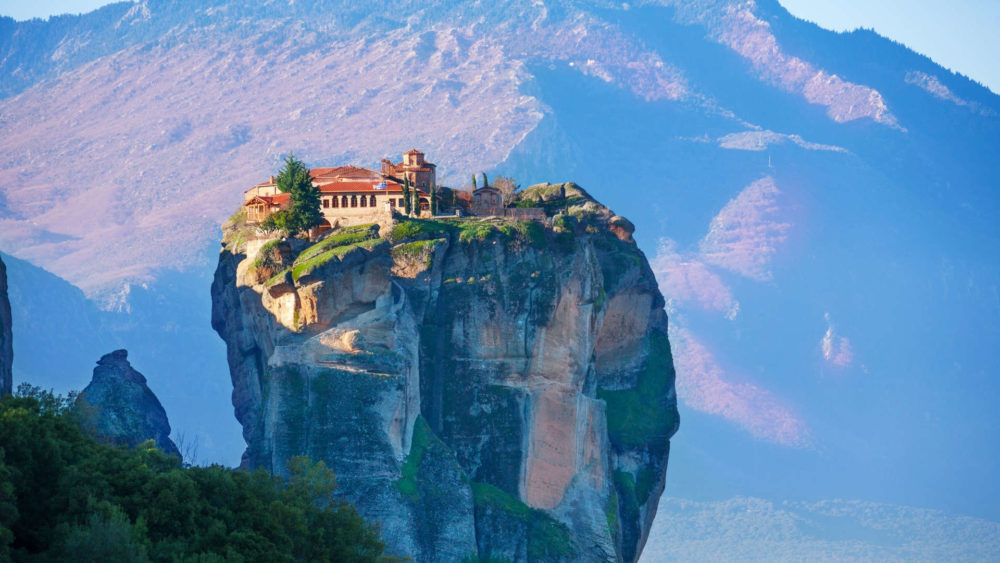[:it]Meteora è una famosa località ubicata nel nord della Grecia, nei pressi della cittadina di Kalambaka. È un importante centro turistico e della chiesa ortodossa (solo il Monte Athos raggruppa più monasteri), ed è stata dichiarata patrimonio dell’umanità dall’Unesco. Letteralmente significa “sospeso in aria”e si caratterizza per la presenza di numerose torri naturali di roccia dove si sono insediati dei monasteri (a loro volta detti “meteore”), caratteristici per l’ardita costruzione in cima a pareti a picco.
I primi insediamenti risalgono all’XI secolo, quando i primi eremiti occuparono alcune grotte nei fianchi dei dirupi.
Nel XIV secolo, allo scopo di difendersi dai turchi, furono costruiti monasteri sulle cime di queste rocce inespugnabili. Si attraversò poi un periodo di proliferazione e di ampliamento dei monasteri, ma con le varie incursioni dei conquistatori, iniziò il declino, in particolare dopo il XVII secolo.
Oggi sono funzionanti e visitabili solo sei dei ventiquattro monasteri che sono stati costruiti in questa area (due di questi abitati da suore) e i turisti possono vedere alcuni luoghi dei monasteri come la chiesa e, nei più grandi, il museo (per le donne sono a disposizione teli o pantaloni per coprire le gambe scoperte).
Questi rilievi di arenaria sono stati modellati dall’acqua e dal vento, in particolare ci sono quattro gruppi di torri alte fino a 400 metri. Per la particolare conformazione rocciosa Meteora è oggi meta di scalatori provenienti da tutto il mondo.[:en]Meteora is a popular destination located in northern Greece, near the town of Kalambaka. It is an important tourist and Orthodox church center (only Mount Athos groups several monasteries), and has been declared a World Heritage Site by UNESCO. It literally means “suspended in the air” and is characterized by the presence of numerous natural rock towers where monasteries (in turn called “meteors”) have settled, characteristic for their daring construction on top of sheer walls.
The first settlements date back to the 11th century, when the first hermits occupied some caves in the sides of the cliffs.
In the 14th century, in order to defend against the Turks, monasteries were built on the tops of these impregnable rocks. Then there was a period of proliferation and expansion of the monasteries, but with the various incursions of the conquerors, the decline began, especially after the seventeenth century.
Today only six of the twenty-four monasteries that were built in this area are functional and can be visited (two of these inhabited by nuns) and tourists can see some places of the monasteries such as the church and, in the larger ones, the museum (for women there are provision of sheets or trousers to cover bare legs).
These sandstone reliefs have been shaped by water and wind, in particular there are four groups of towers up to 400 meters high. Due to the particular rocky conformation Meteora is today a destination for climbers from all over the world.[:]






